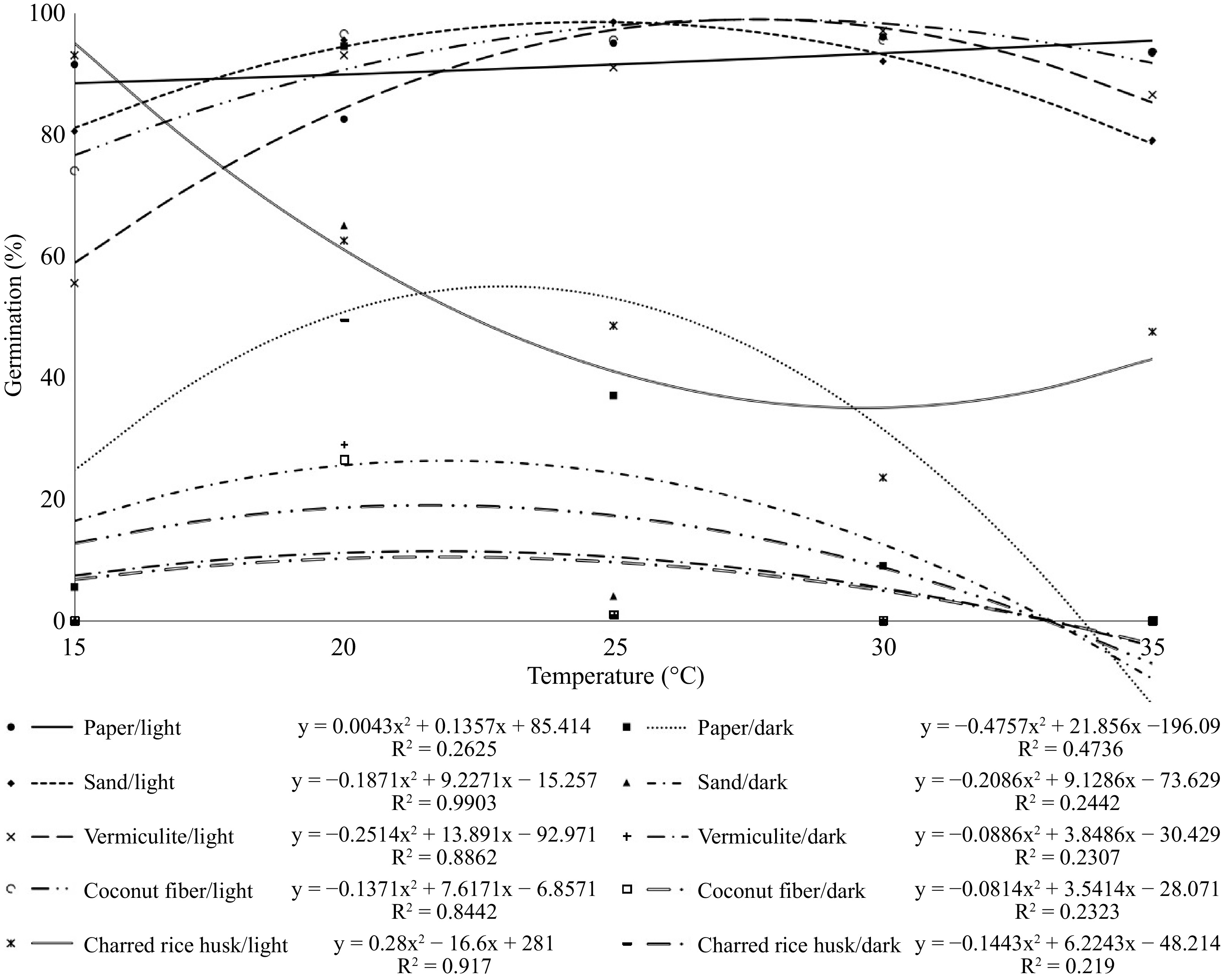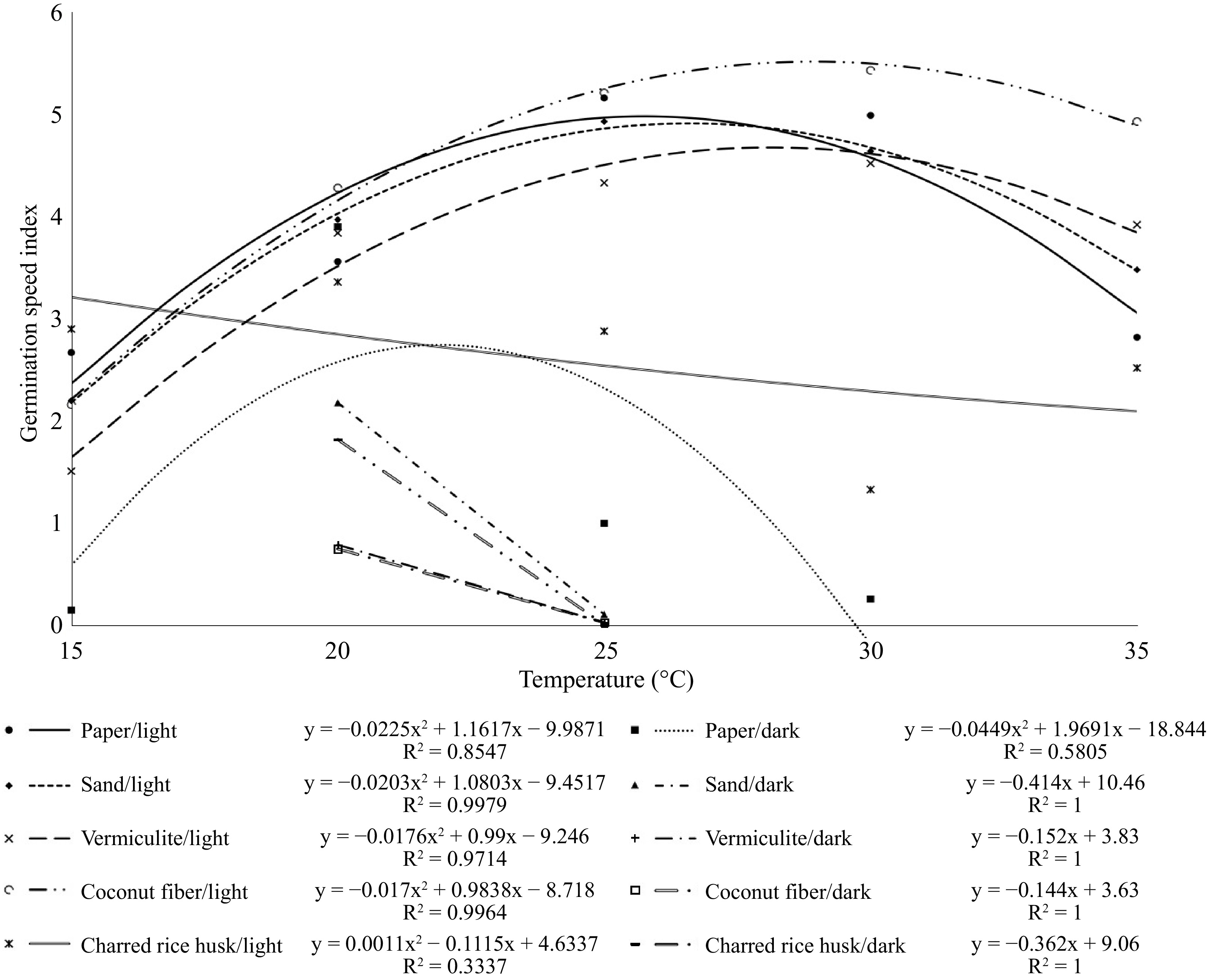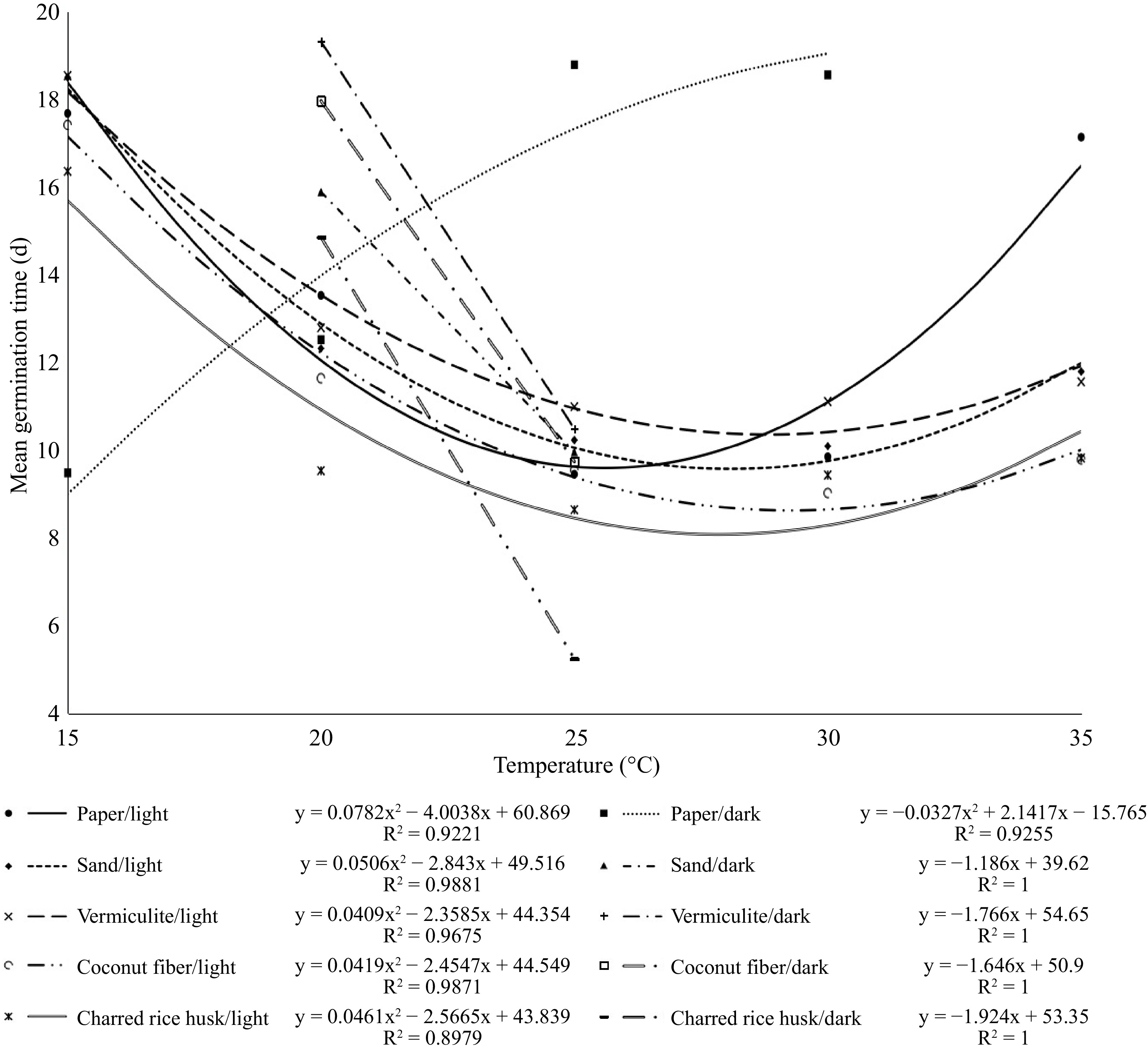-
Aechmea, a genus within the Bromeliaceae family, is diverse and complex, featuring varied flower shapes and pollinators[1]. These perennial plants have spiral rosette leaves and are epiphytic, absorbing moisture through leaf trichomes and anchoring roots that draw water from a central tank in the rosette[2]. Native to the Americas and mainly found in the Neotropical Region, bromeliads encompass about 58 genera and 3,408 species, many native to Brazil and ranging from the southern United States to Patagonia. Some species create phytotelmic environments by accumulating water and organic matter, which serve as substrates and food for various organisms[3,4].
Species of the genus Aechmea are polyphyletic, with distinct clades reflecting geographic distribution rather than morphological similarity, suggesting that traits evolved independently due to local adaptations within the Bromelioideae subfamily[5]. Bromeliads' exotic appearance and resilience have increased their popularity in landscaping and ornamentation. Despite high demand in Brazilian floriculture, Brazil's native ornamental flora remains underexplored, leading to genetic erosion[6].
Global climate change and human land use are major contributors to the current biodiversity crisis, leading to population declines and extinctions. Rapid climate shifts force species to adapt behaviorally and in their habitats to survive, highlighting the importance of understanding thermal ecology and microhabitat use for conservation[7]. To improve bromeliad cultivation, it is crucial to have technical knowledge on optimizing plant production and quality, particularly in finding suitable low-density, highly permeable, and aerated substrates needed for their growth and fertilization[8].
Propagation of bromeliads can be achieved through vegetative structures or seeds. Understanding the ideal conditions for seed germination is essential, as factors like water, light, temperature, oxygen, and substrate types affect each species differently[9]. Optimizing temperature, substrate, and light can enhance germination percentage, speed, and uniformity, leading to more vigorous seedlings, reduced production costs, and consistent development, even under adverse conditions[10].
High physiological seed quality is vital for crop development, making it essential to evaluate the germination process for optimizing propagation[11]. This research focused on assessing how temperature, substrate, and lighting conditions affect the germination of Aechmea gamosepala seeds, highlighting the need for conservation and sustainable use of Brazil's native plant species despite their genetic diversity.
-
The experiment was conducted in the Seed Technology and Production Laboratory at the State University of Londrina (UEL), Brazil. Bromeliad seeds (Aechmea gamosepala Wittm.) were sourced from ripe fruits harvested from the experimental area of the Department of Agronomy at UEL, Brazil. The seeds were extracted from the fruits and dried on filter paper for 48 h in the shade.
Treatments
-
The experiment employed a completely randomized design in a 5 × 5 × 2 factorial scheme, with five temperatures (15, 20, 25, 30, and 35 °C), five substrates (blotting paper, sand, vermiculite, coconut fiber, and charred rice husk), and two lighting conditions (presence and absence of light), with four repetitions.
Substrates for each treatment were placed in crystal polystyrene boxes with lids (11.0 cm × 11.0 cm × 3.5 cm). For each replication, 50 seeds were added to each box. In the paper treatment, a sheet of blotting paper was used and moistened with distilled water (2.5 times the dry mass of the paper)[12]. For other treatments, the respective substrates were added to half the capacity of each box and moistened with distilled water to field capacity.
Treatments in the absence of light were carried out in plastic boxes wrapped in aluminum foil and black bags. The light treatments were conducted under constant fluorescent lighting. Darkness treatments were evaluated in a dark room using a green lamp. Seeds were kept in BOD incubators at the specified temperatures of 15, 20, 25, 30, and 35 °C, depending on the treatment.
Variables measured
-
The evaluation was conducted daily until the germination process stabilized for each experimental unit. Seeds were considered germinated when root extension reached or exceeded 2 mm. The variables evaluated were: the percentage of germination (G), germination speed index (GSI)[13], and mean germination time (MGT, in days)[14].
Statistical analysis
-
The data were subjected to analysis of variance, and when significant, regression model adjustments were made for the variables G, GSI, and MGT using Sisvar® software.
-
The interaction among the factors 'temperature', 'substrate', and 'lighting conditions' significantly affected the variables of germination percentage, germination speed index, and mean germination time (Table 1).
Table 1. p-value of the variables germination percentage (G), germination speed index (GSI) and mean germination time (MGT - days) of bromeliad seeds (Aechmea gamosepala) under different temperatures (15, 20, 25, 30, and 35 °C), substrates (blotting paper, sand, vermiculite, coconut fiber, and charred rice husk), and lighting conditions (presence and absence of light).
Variable Parameter p-value G Temperature (T) 0.0000* Substrate (S) 0.0000* Lighting conditions (L) 0.0000* T × S 0.0000* T × L 0.0000* S × L 0.0000* T × S × L 0.0000* CV 22.94% GSI Temperature (T) 0.0000* Substrate (S) 0.0000* Lighting conditions (L) 0.0000* T × S 0.0000* T × L 0.0000* S × L 0.0000* T × S × L 0.0000* CV 24.54% MGT Temperature (T) 0.0000* Substrate (S) 0.0000* Lighting conditions (L) 0.0000* T × S 0.0234* T × L 0.0000* S × L 0.0039* T × S × L 0.0000* CV 39.44% NS, Non-significant; *, Significant p < 0.05. The germination process of Aechmea gamosepala seeds is positively influenced by the presence of light (Fig. 1). Among the substrates tested, paper proved to be the most effective, exhibiting minimal reduction in germination across various temperature conditions. For seeds germinated on paper, temperatures of 25, 30, and 35 °C yielded the highest germination percentages under light conditions, with rates of 95.00%, 96.00%, and 93.50%, respectively.

Figure 1.
Germination percentage of bromeliad seeds (Aechmea gamosepala) under different temperatures (15, 20, 25, 30, and 35 °C), substrates (blotting paper, sand, vermiculite, coconut fiber, and charred rice husk), and lighting conditions (light and dark).
In contrast, for substrates such as sand, vermiculite, and coconut fiber, temperatures of 20, 25, and 30 °C under light conditions provided the highest germination rates, ranging from 91.00% to 98.50%. The charred rice husk substrate, however, was the least favorable for germination under light conditions, with only the 15 °C treatment achieving a germination rate above 90.00% (93.00%).
In the absence of light, germination of Aechmea gamosepala seeds on paper substrate at 20 °C was the only condition that supported favorable germination, reaching 94.50%. In other combinations under dark conditions, germination rates varied widely from 65.00% to 0.00%. Additionally, the temperature of 20 °C was found to be beneficial for all substrates evaluated under darkness.
It is noteworthy that for Physalis angulata seeds, the recommended conditions for optimal germination included a paper towel substrate at 35 °C and in the absence of light[15].
There is significant variation in germination behavior among different species depending on the substrate type, as factors such as structure, aeration, water retention capacity, and pathogen infestation can differ with each material used[16]. The present study indicates that charred rice husk is not a viable substrate for the germination of A. gamosepala (Fig. 1).
Regarding the germination speed index (GSI), it is evident that light conditions are superior to dark conditions. As shown in Fig. 2, the GSI variable is absent under dark conditions for the substrates sand, vermiculite, coconut fiber, and charred rice husk at temperatures of 15, 30, and 35 °C. Additionally, at 35 °C, the paper substrate also did not show any germination, making it impossible to measure the GSI under these conditions.

Figure 2.
Germination speed index (GSI) of bromeliad seeds (Aechmea gamosepala) under different temperatures (15, 20, 25, 30 and 35 °C), substrates (blotting paper, sand, vermiculite, coconut fiber, and charred rice husk), and lighting conditions (light and dark).
In the presence of light, the germination speed index (GSI) exhibited a similar quadratic behavior across all evaluated substrates. Specifically, the GSI tended to increase as the temperature rose to 25−30 °C, followed by a decrease as the temperature continued to increase to 35 °C. The charred rice husk substrate, however, showed a higher GSI at 20 °C compared to other substrates. Despite this, the GSI for charred rice husk was notably lower than for other substrates, particularly at higher temperatures. For Aechmea costantinii, it was observed that germination is epigeal, with greater intensity and speed at 35 °C, regardless of light conditions[17]. Under dark conditions, the GSI generally decreased as the temperature increased across all substrates evaluated (Fig. 2).
Temperature is known to influence germination and plant development by affecting water absorption rates and chemical reactions that trigger the mobilization of reserves and the synthesis of substances necessary for seedling growth[18]. Therefore, evaluating the impact of temperature on germination is crucial for optimizing the seed's germination potential in the shortest time, as extreme temperatures can inhibit the process.
For most tropical species, the optimal temperature range is between 15 and 30 °C[9]. This finding aligns with the results of the present study, which showed that temperatures of 25 and 30 °C were favorable for the germination of A. gamosepala seeds under light on paper, sand, vermiculite, and coconut fiber substrates. Ortiz et al.[19] found that a temperature of 20 °C, combined with sand substrate and light, provided optimal conditions for the germination of Epiphyllum oxypetalum seeds, as indicated by a higher GSI and shorter mean germination time (MGT), within the 15−30 °C range.
Regarding the MGT variable, a clear advantage was observed when A. gamosepala seeds were germinated under light conditions. As noted for the GSI, the MGT could not be measured under dark conditions for sand, vermiculite, coconut fiber, and charred rice husk substrates at temperatures of 15, 30, and 35 °C, nor on paper at 35 °C, due to lack of germination (Fig. 3).

Figure 3.
Mean germination time (MGT - days) of bromeliad seeds (Aechmea gamosepala) under different temperatures (15, 20, 25, 30, and 35 °C), substrates (blotting paper, sand, vermiculite, coconut fiber, and charred rice husk), and lighting conditions (light and dark).
For the mean germination time (MGT), a quadratic behavior is observed under light across all evaluated substrates. Specifically, MGT tends to decrease with increasing temperature up to 25−30 °C, followed by an increase as the temperature rises to 35 °C. Jerônimo et al.[20] found that Cereus jamacaru DC. subsp. jamacaru seeds exhibited greater vigor at 30 °C compared to the germination speed index (GSI), particularly in the Varjota area. In the Palma area, seeds had a shorter MGT of 4.01 days at 30 °C[20], which confirms the present study's finding that 30 °C is favorable for some species.
In dark conditions, the MGT tends to decrease with increasing temperature for sand, vermiculite, coconut fiber, and charred rice husk substrates. Conversely, on paper, higher temperatures lead to an increased MGT, requiring more days for seeds to germinate.
Analyzing the MGT is crucial for practical applications. For instance, increasing the temperature from 20 to 25 °C under light reduces the time required for germination by approximately 4, 2, 2, 2, and 10 d for paper, sand, vermiculite, coconut fiber, and charred rice husk substrates, respectively. This reduction in germination time is advantageous for rural producers, as it helps mitigate the effects of adverse conditions such as drought, frost, pest infestations, and pathogen attacks.
Seed germination is a critical stage in the plant life cycle, and understanding the factors influencing it is essential for successful cultivation, plant breeding, and conservation efforts. Temperature, substrate, and light conditions are fundamental components of the germination process[10]. Since seeds of different species exhibit variable physiological responses to these factors, it is recommended to study the influence of these components on the germination of each species of interest. This approach will provide valuable insights for assessing seed batch viability and optimizing germination conditions.
-
It is recommended that Aechmea gamosepala seeds be germinated under light at temperatures of 25 or 30 °C, as these conditions optimize germination percentage, germination speed index, and mean germination time. Suitable substrates include paper, sand, vermiculite, or coconut fiber. The charred rice husk substrate is not favorable for the initial development of A. gamosepala.
-
The author confirms sole responsibility for the following: study conception and design, data collection, analysis and interpretation of results, and manuscript preparation.
-
The datasets generated during and/or analyzed during the current study are available from the corresponding author on reasonable request.
-
The author declares that there is no conflict of interest.
- Copyright: © 2024 by the author(s). Published by Maximum Academic Press, Fayetteville, GA. This article is an open access article distributed under Creative Commons Attribution License (CC BY 4.0), visit https://creativecommons.org/licenses/by/4.0/.
-
About this article
Cite this article
Ortiz TA. 2024. Germination of Aechmea gamosepala seeds under various temperatures, substrates, and lighting conditions. Technology in Horticulture 4: e023 doi: 10.48130/tihort-0024-0020
Germination of Aechmea gamosepala seeds under various temperatures, substrates, and lighting conditions
- Received: 25 June 2024
- Revised: 25 August 2024
- Accepted: 28 August 2024
- Published online: 09 October 2024
Abstract: The use of native species from different ecosystems can contribute to increased environmental biodiversity. Despite the abundant plant genetic resources, there are few initiatives for the conservation, domestication, and sustainable use of these species. Therefore, this research aimed to evaluate the influence of temperatures, substrates, and lighting conditions on the germination of Aechmea gamosepala seeds. The experiment was conducted with bromeliad seeds (A. gamosepala Wittm.) using a completely randomized design with a 5 × 5 × 2 factorial scheme. The factors included five temperatures (15, 20, 25, 30, and 35 °C), five substrates (blotting paper, sand, vermiculite, coconut fiber, and charred rice husk), and two lighting conditions (presence and absence of light), with four replications. The analyzed variables were germination percentage (G), germination speed index (GSI), and mean germination time (MGT - days). The data were subjected to analysis of variance, and regression models were fitted for all variables when significant. It is recommended that A. gamosepala seed germination be conducted in the presence of light at a temperature of 25 or 30 °C, as these conditions favor the variables G, GSI, and MGT. The substrates of paper, sand, vermiculite, or coconut fiber are suitable for germination, whereas the carbonized rice husk substrate is not favorable for the initial development of this species.
-
Key words:
- Bromeliad /
- Native species /
- Biodiversity /
- Domestication of species /
- Sustainability /
- Vigor












